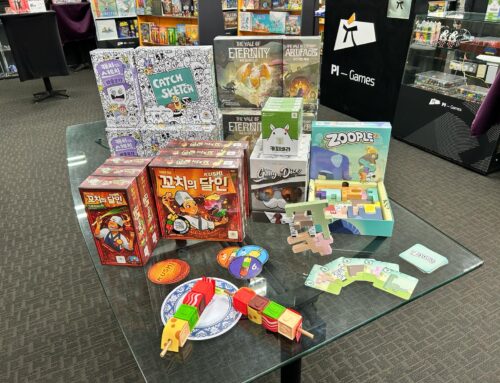Hey PI-Fans,
Let’s just get this out of the way from the start. Savage Worlds Adventure Edition is an RPG, but Savage Worlds is not Dungeons & Dragons.
If you want a role-playing system based on the pseudo-medieval high-fantasy Vancian-magic rooted assumptions that D&D is known for, you play D&D. This isn’t meant as a knock. D&D is a great system, but is also wholly unapologetic in the kind of story it wants to tell.
As a ‘universal’ system, Savage Worlds… is less constrained than its RPG half-brother and a bit more manic in execution.

TL;DR: Savage Worlds is a classless RPG system which uses a simple roll-against-target-number resolution system for streamlined roleplaying and fast combat. Savage Worlds Adventure Edition is the latest edition of the Savage Worlds RPG and provides a universal set of rules that can be easily adapted for Noir, Superhero, Pulp-Action, Military and Science-Fiction settings.
Savage Worlds is a generic ‘Universal’ ruleset that was designed to run games set in a vairety of genres – the Savage Worlds system can easily accommodate science-fiction, fantasy, horror, steampunk and superhero genres, but is most at home with grittier settings.
The ‘Adventure Edition’ is the newest iteration of the Savage Worlds role-playing game represents an attempt to broaden the system to cater to a variety of role-playing styles, from role-play heavy sessions to large scale miniature heavy battles.
Character creation in the system is focused around a classless system where a character is built by assigning points to Traits (many of the usual RPG standards of Agility, Smarts, Spirit, Strength, Vigor) and Skills. To flesh out characters, players have the option of buying Edges that grant chracters a variety of perks and Hindrances which come with their own mechanical detriments.
While most RPG simply slap on static modifiers as stats improve, in Savage Worlds, the better a character’s statistics, the larger the die they will use when rolling against tests (progressing from a 4-sided die to a 6-sided to an 8-sided, etc). An unmodified target for most tasks is typically a four or higher, so a skilled character rolling an 8-sided die is far more likely to succeed than a rank novice with a 4-sided one.
Pinnacle have wisely streamlined a character progression with a system of Advances, which allow the acquisition of new Edges, raising skills and attributes and buying off Hindrances. Characters rank up after they acquire a number of Advances, turning the leveling system on it’s head – characters ‘level’ up and advance in Rank from developing and gaining power rather than the other way around for a class-level based system.

Combat is similarly streamlined. Rather than having characters trading blows as if perfect condition until HP is depleted and then suddenly collapsing, Savage World avoids the eroding blocks of HP problem with a straightforward wound system. The first time a target is hit and successfully wounded, they are Shaken. Subsequent wounds (or particularly devastating injuries) cause wounds. Player Characters and some major Antagonists have three wounds while most minions have one, making combat frenetic (and often tense) affairs that encourage swashbuckling teamwork.
Situational rules reward teamwork and Support actions allow for for aiding other combatants in combat, meaning that even characters not designed for the press of combat have a role in influencing a battle outcome.
Without gushing on about the system, Savage Worlds also introduces a robust system for ‘Powers’ that caters to a variety of actions ranging from flinging fireballs with a wizard’s staff to force pushing stormtroopers off a ledge.
A section on setting rules, allowing GMs to flavor their game to suit a particular setting quirk (E.g. Tougher unarmored martial artist for a Bruce Lee-esuqe Asian-Cinema flair), and a robust bestiary rounds out the book as well.

If you’ve noticed, up until this point, I’ve avoided talking about a setting. This is because while Savage Worlds has a number of published settings (including Palladium’s massive RIFTS) and a number of suggested plot ideas, it doesn’t have a monolithic setting akin to D&D’s Forgotten Realms or Pathfinder’s Golarion.
Instead, the system doubles down on the tool-boxy nature of its design. Want to do Modern Military Soldiers hunting Aliens? Sure! A low-fantasy medieval setting where the Gods walk among the populace? Why not? A far ranging Mass Effect-esque Space Opera? Be our guest.
Ultimately though, Savage Worlds is dependent on the type of story you want to tell, really. Its amazingly easy to port a wide variety of settings into the Savage Worlds system without much resistance. Regardless of what a GM wants to build, its all pretty doable with a bit of elbow grease.
Savage Worlds Adventure Edition is a very easy-to-grasp but detailed toolbox RPG system which can run games in almost any genre out of the core rulebook. If you’re looking for a fast streamlined RPG and are willing to put in a bit of legwork, you really can’t go wrong with this unique universal system.





